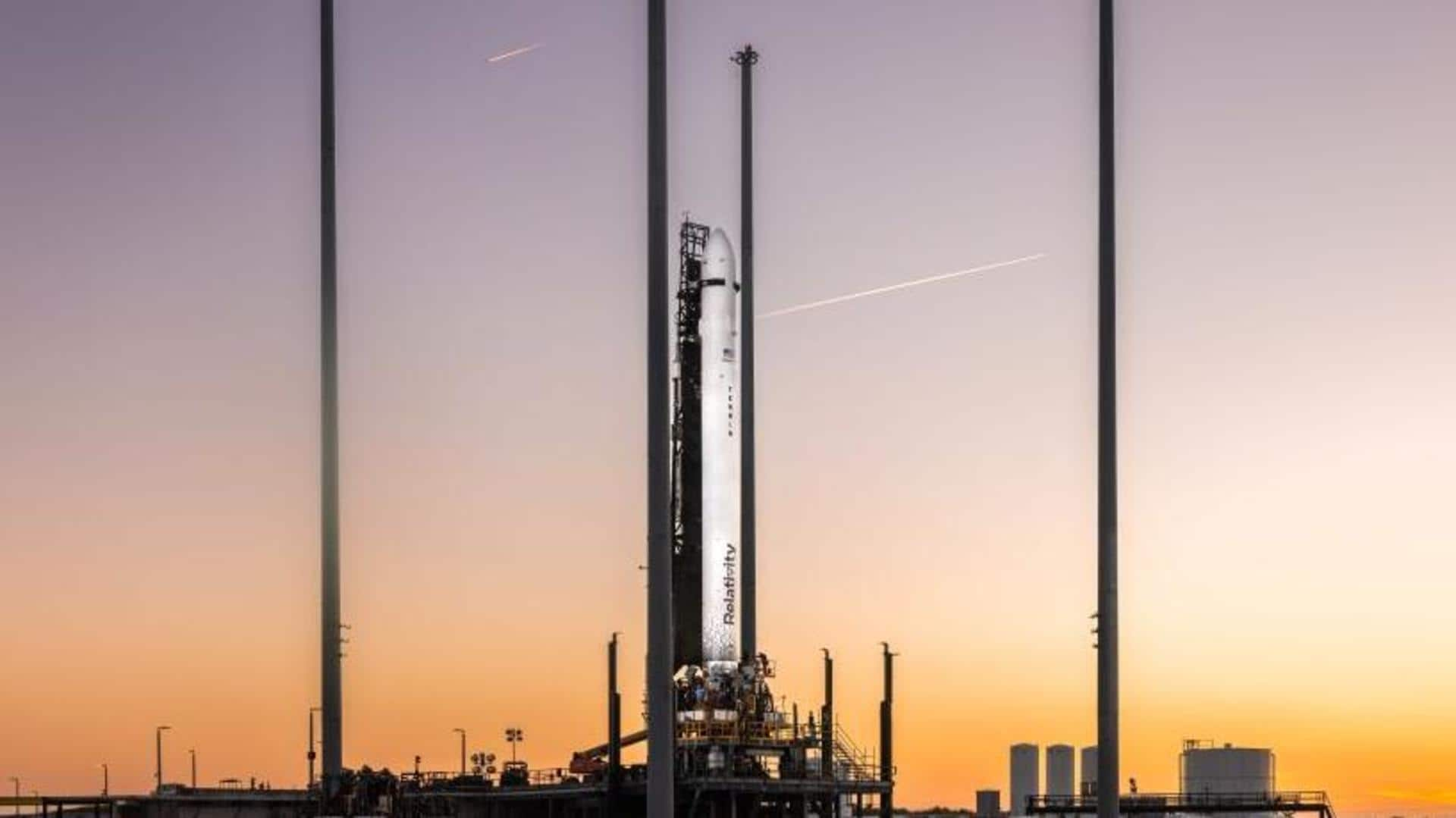
World's first 3D-printed rocket is heading to space: Key facts
What's the story
The world's first 3D-printed rocket, built by Relativity Space, a California-based aerospace startup, will soon head to space. The launch vehicle, named Terran 1, was supposed to take off on March 8 but was called off due to technical issues encountered during the countdown. It is now scheduled to lift off on March 11. Here are some key facts about the mission.
Context
Why does this story matter?
Rocket
85% of Terran 1's structure is 3D-printed
Terran 1 is a 110-foot-tall rocket built to launch small satellites into low-Earth orbit (LEO). 85% of the rocket's structure is 3D-printed by mass and the company aims to push the limit to 95% in future vehicles. The two-stage launch vehicle has nine Aeon engines in its first stage and one Aeon Vac in its second stage.
Details
Terran 1 can carry payloads of about 1,250 kilograms
As a two-stage, 7.5-foot-wide, expendable rocket, Terran 1 is claimed to be the "largest 3D printed object to exist and to attempt orbital flight." It can ship payloads of up to 1,250 kilograms to the LEO and can deploy 900 kilograms to a sun-synchronous orbit, which would cost about $12 million per flight, according to Relativity Space.
Fuel
Terran 1 uses liquid oxygen (LOX) as an oxidizer
Terran 1 uses methane as a propellant and liquid oxygen (LOX) as an oxidizer. It will be the first US-developed "methalox" rocket for an orbital launch, and it could be the first such vehicle to reach orbit. In December 2022, a Beijing-based company called Landspace launched a methalox rocket, Zhuque-2, but it didn't make it to orbit and all the onboard satellites were lost.
Advantage
Methane is considered to be a more efficient rocket fuel
As opposed to conventional fuel options such as kerosene, methane is considered to be a more efficient and higher-performing rocket fuel. It is also seen as a cheaper alternative because burned methane does not cover the engines with residue like kerosene does, which means that reusable rockets would require lesser maintenance between launches, and could thereby prove to be advantageous.
Information
Terran 1 will not carry any payload during maiden launch
During its maiden flight, Terran 1 will not be carrying any payload. Instead, the company will be assessing if the rocket can withstand real launch conditions and make it to space.
Failed launch attempt
The launch was called off merely 70 seconds before takeoff
The initial launch attempt on March 8 was aborted merely 70 seconds before takeoff because of "exceeding launch commit criteria limits" for the fuel temperature on the rocket's second stage. Terran 1 is now scheduled to liftoff on March 11, from Launch Complex 16 in Cape Canaveral, Florida. The launch window will start at 13:00 ET (11:30 pm IST).
Terran R
The company is also working on a larger, reusuable rocket
Relativity Space is also working on a larger, fully reusable rocket called Terran R. The 216-feet-tall rocket will be able to deploy more than 20,000 kilograms to the LEO. It is expected to launch in 2024. A noteworthy point is that the company can create its rockets, both Terran 1 and Terran R, from raw materials within 60 days.